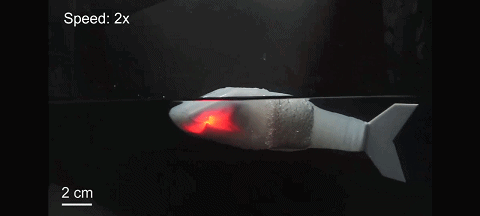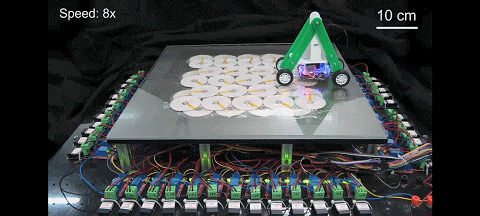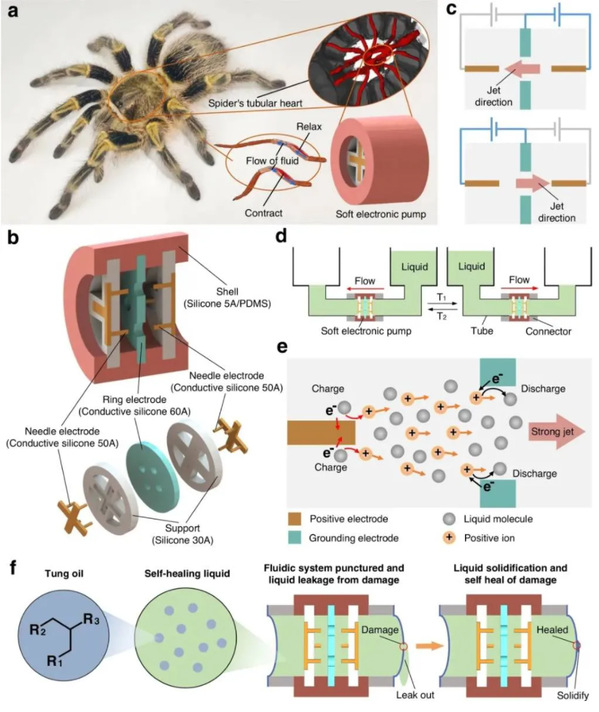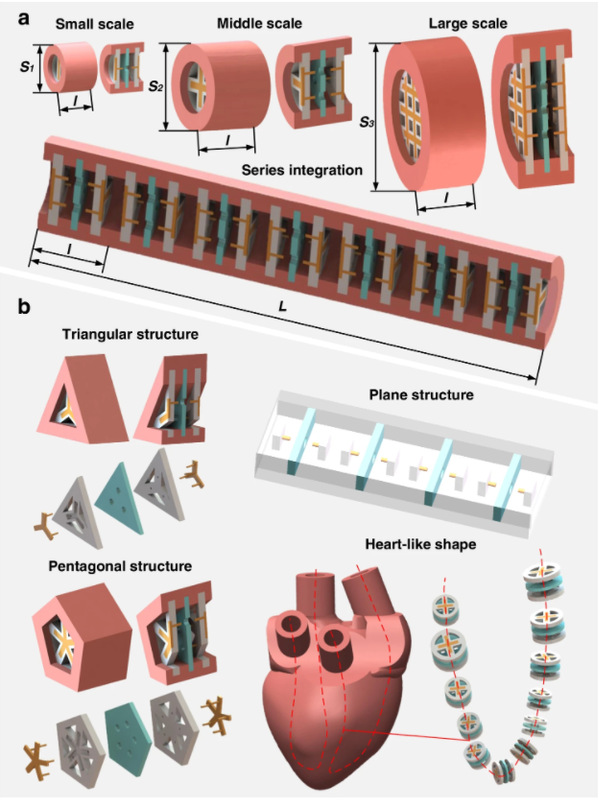ZJU scientists develop the world’s first self-healing soft pump for robots

Soft robotic fish

Robotic vehicle
What makes this soft robotic fish swim gracefully? What makes this robotic vehicle move forward? They have a common “heart”—a soft electronic pump.
This “heart”, designed by the research team led by Professor ZOU Jun at the Zhejiang University School of Mechanical Engineering, is the world’s first self-healing soft pump.
“Persistent challenges with the hydraulic systems, such as leaking and making noise, have severely impeded its application. Moreover, the poor portability of traditional soft fluidic actuators has inhibited their untethered applications,” said ZOU Jun.
“Our inspiration comes from spiders, which have their unique biological hydraulic systems, allowing them to achieve autonomous and agile motions and self-heal their damaged tissues or skins,” ZOU Jun added.
The research team developed a soft electronic pump that utilizes electrical energy to pump liquid through the electron and ion migration mechanism and includes special functional liquids that can automatically heal the damages of soft robots. This study is published in a research article entitled “Customizing a self-healing soft pump for robot” in the April 14 issue of Nature Communications. Zhejiang University Ph.D. student TANG Wei is the lead author of the paper, and associate researcher ZHANG Chao and Professor ZOU Jun are the corresponding authors.

Bio-inspiration, architectures, operational principle, and self-healing liquid of soft electronic pumps.
The prototype of this soft electronic pump consists of a soft ring grounding electrode with four circular holes, two soft ring positive electrodes with four needles, two insulated electrode supports, and an insulated elastomer shell.
When a soft electronic pump is filled with functional liquids, a strong jet flow could be generated from a needle tip through a hole under an applied electrical field. Two positive electrodes are symmetrically distributed on each side of the grounding electrode, allowing for reversibly bidirectional pumping in a remarkably controllable way when two opposite needle-hole electrode pairs are selectively applied with a voltage.
Moreover, a homemade lightweight and miniature high-voltage power converter powered by batteries or the wireless power transfer system are developed to actuate and control the reversibly bidirectional pumping of the soft electronic pump, enabling the soft robotic fish and the robotic vehicle to achieve untethered and versatile motions when the customized soft pumps are implanted into them.
To fulfill a similar self-healing function to that of spiders’ blood, researchers improved the liquid for electrical response actuation in soft electronic pumps. This functional liquid is a dibutyl sebacate-tung oil solution, in which the tung oil is dissolved evenly in the dibutyl sebacate. Tung oil is marked by its salient solidification property because of its special compositions: oxygen-linked fatty carboxylate residue and reactive conjugated carbon–carbon double bonds. When soft robots are damaged, the self-healing liquid inside robotic bodies will be exposed to air and then solidified to automatically heal the damages.
The work of the soft pump will cause liquids to leak out continuously from the damage of the fluidic system once it is punctured, but the pump can operate well again without any leakage when self-healing of the damage is finished.
Interestingly, the appearances and pumpabilities of soft electronic pumps are diverse. Therefore, they could be customized to desired ones for various soft robotic applications due to the flexible and diverse spatial arrangement of modular needle-hole electrode pairs.

Schematic illustration of customizable appearances of soft electronic pumps.
Compared with commercial pumps/compressors, this soft electronic pump can generate larger specific pressures and specific flow rates. Besides, it is more portable.
“The current soft electronic pump is still in its infancy, and there is much room for improvement in actuation performances, fabrication method and response speed,” said ZOU Jun.
“This work provides a new solution for the silent actuation and self-healing of the hydraulic systems. It is expected to enormously enhance the capacity of the hydraulic systems to adapt to the environment. Meanwhile, it provides new insights into the untethered applications for wearables,” remarked ZOU Jun.